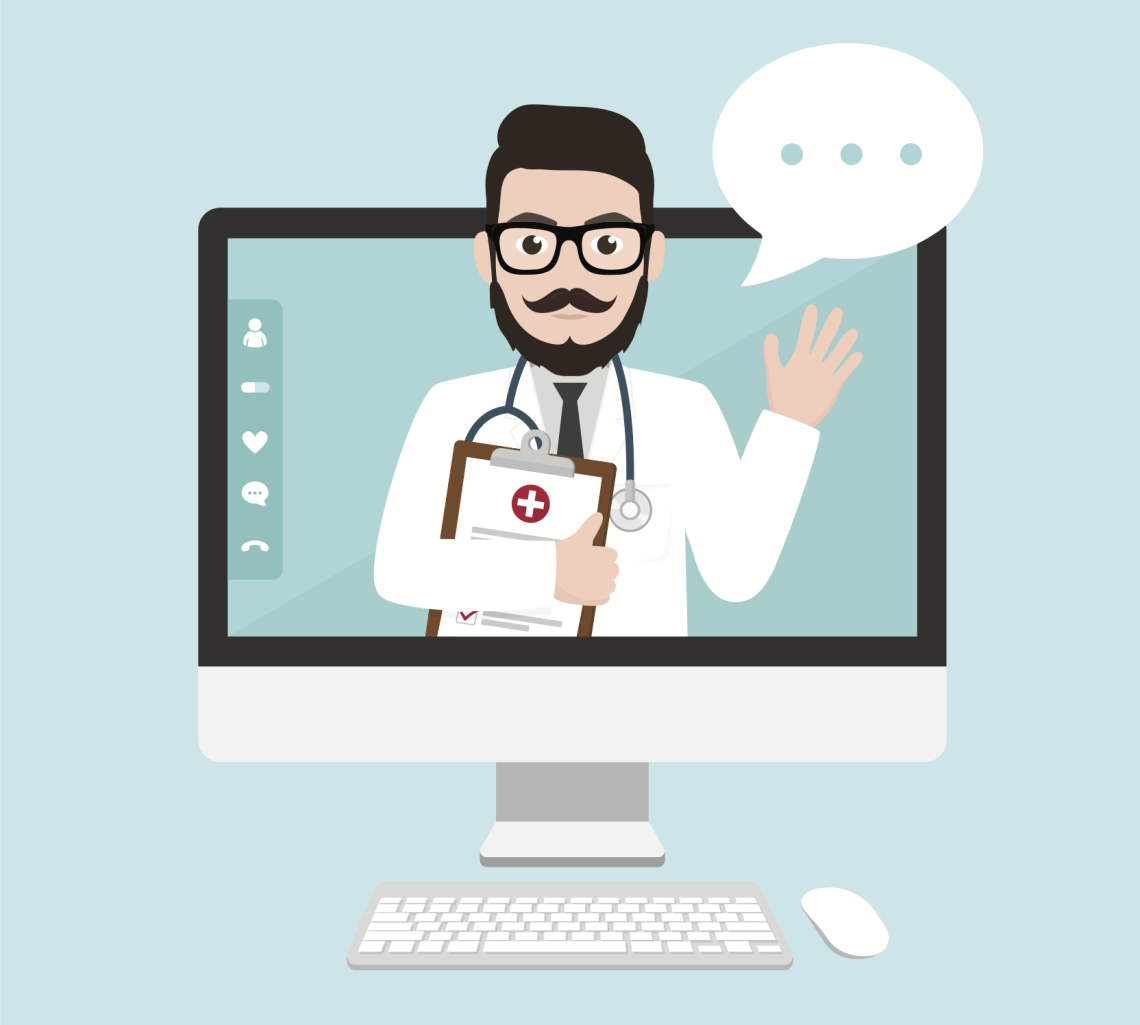Telemedicine and e-Health, Great Move in Medical Industry
Share

Telemedicine and e-health is the application of clinical medicine whose development utilizes telephone, internet, and other communication networks to transfer medical information. In practice, telemedicine is applied in two concepts, namely real time as well as store and forward concepts. These two concepts will be targeted to different needs.
The telemedicine application is very broad, depending on the material and the object of transmission. In addition, there are also various other telemedicine disciplines such as telenursing, which is remote nursing services, and teleprescribing which is remote prescription. Everything will be helped with the rise of technology.

Telemedicine hardware and software are very expensive especially transmissions that use broadband channels, so control center access and servers should be in the center. However, it must be distinguished which one can be applied according to ability, and which one must wait for high technology usage.
Many applications have been developed based on the concept of telemedicine, one example is WebcamMD. WebcamMD, is a site that provides consulting services for disease diagnosis through website services. Let’s look at the rest of the articles to find in-depth review of this.
Synchronous and Asynchronous Telemedicine
According to the WHO definition, telemedicine and e-health can be defined as the delivery of health care services by considering distance and using information and communication technology, including information exchange diagnosis, treatment and prevention of diseases and injuries, research and evaluation, and continuing education of health care providers.

Synchronous or real time telemedicine can be as simple as telephone use, or complex such as the use of surgical robots. For this reason, a connecting media is needed that can offer real time interaction so that one party can handle health. Interaction is a part of medical check-up that is important in several cases.
For example the use of telephotoscope technology that provides facilities for a doctor who looks into the patient’s hearing from a distance. Another example is the telethoscope which makes a doctor listen to the patient’s heartbeat from a distance. This telemedicine and e-health technology is going to make a groundbreaking change in the medical industry.
Asynchronous or store-and-forward telemedicine involves collecting medical data and sending this data to a doctor at the right time for offline evaluation. Dermatologists, radiologists and pathologists are specialists who usually use this technology. Medical records in the right structure are the main components of this transfer.
Benefits of Telemedicine
The benefits of telemedicine and e-health include into 3 aspects that are interrelated with each other, namely patients, doctors and hospitals. Direct benefits for patients are the ease to get help while waiting for help directly from private doctors. This will be very helpful in hard situations and having doctors order while waiting can make everyone calmer during emergency.

Patients will feel like they are staying close to home where family and friends can provide direct support. It also reduces mental stress or tension felt in the workplace. Selecting between patients who need to be taken to hospital and patients who do not need hospitalization will remain at home.
There are several facilities offered by WebcamMD, specifically for patients and for health professionals. Patients or users log in first and then live in a teleconference with online officers and mention the difficulties that occur for problems such as fussy babies or first aid in an accident that occurs in one family member.
Today, telemedicine and e-health has become important in a treatment. Telemedicine has been able to bring doctors’ hands out of their practice space and touch sick people who live far away. This includes Indonesia which definitely needs this technology advanced as soon as possible. There are places in Indonesia that can’t access doctors fast and this is the urgency for this project.
Telemedicine and e-Health in Indonesia
The demand for telemedicine in Indonesia itself is quite high, given the uneven distribution of health workers, the distribution of health facilities, and challenging geographical barriers. Due to the limited number of doctors in certain places, there are currently many consultations conducted through social media such as WhatsApp.
Communication in this form is indeed fast, but the poor quality of documentation requires a new system that is more comprehensive and focused on the health sector. Telemedicine is present as a solution with four excellent programs at present. However, it is also possible to develop other programs such as telepathology, teledermatology, and others.

At present, the Indonesia America Society Academic (IASA) is collaborating with the Papua provincial government in accelerating the development of welfare in Papua with the support of Bappenas. One form of welfare development in the health sector is by utilizing telemedicine between hospitals in Papua.
In addition, the idea was to use telemedicine and e-health to maximize the AHS program between the educational institutions of the FK-KMK UGM and network hospital services. Hopefully, by starting from this small scale, telemedicine can continue to develop integrating education and health services to provincial and national levels.
Development of the Application
These are examples of developments in telemedicine applications in the world and Indonesia. Today many doctors have built closeness with patients via telephone or short messages (SMS). This makes it possible for doctors to deal with special problems such as outpatient hepatitis patients, or outpatient hypertension patients, etc.
Smart-Home, Smart Patient technology is a technology for monitoring patients, where patients remain at home during monitoring. This technology was developed by ATA (American Telemedicine Association), Home Telehealth and Remote Monitoring. Monitoring is a part of medical importance and very necessary to maintain the health of patients.
Robotic telemedicine and e-health project was developed by Offsite Care Inc. This robot allows the doctor to coordinate with the local clinic or hospital, while simultaneously examining patients. The United States Government collaborated with IBM to build telemedicine infrastructure at Holy Family Hospital Rawalpindi in Pakistan.

Here a telemedicine system was established to connect expert doctors in the United States to the hospital via the Wi-Max network. Doctors deal with patients through pregnancy and with devices operated by nurses at the hospital. Having expert doctors in hand for emergency situation is why telemedicine and e-health needs to be advanced fast.




















